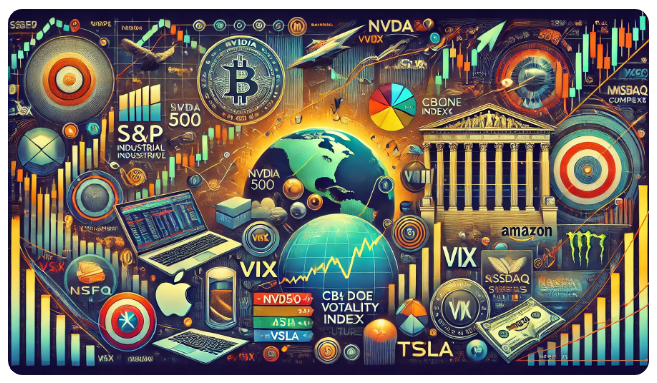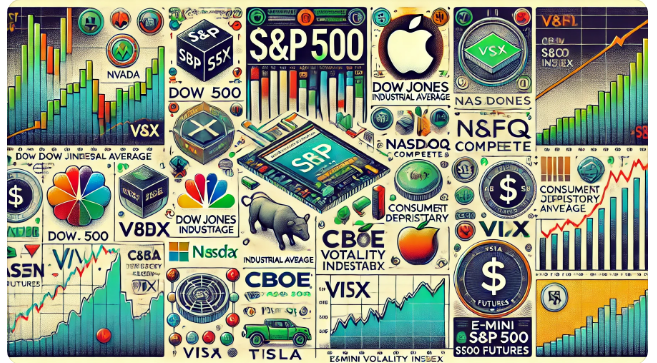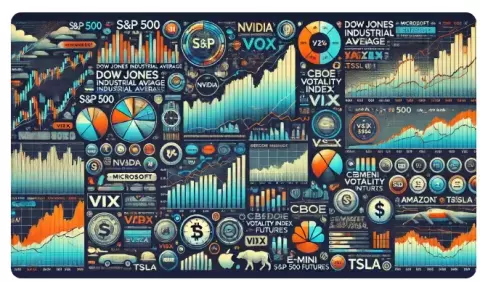Comprehensive Guide to Market Gauge Stocks and Indexes
Introduction
Market gauge stocks are pivotal in assessing the health and direction of the financial markets. These stocks and indexes provide a snapshot of market sentiment, sector performance, and overall economic conditions. By monitoring a selection of key stocks and indexes, traders and investors can make more informed decisions. This article will delve into the essential stocks and indexes used for market gauging, their significance, and how to leverage them effectively.
Major Indexes
1. S&P 500 (SPX)
Description: The S&P 500 includes 500 of the largest U.S. companies across various industries, representing the broader U.S. economy. Importance: It provides a comprehensive overview of the market's health, making it a benchmark for both institutional and retail investors.
2. Dow Jones Industrial Average (DJIA)
Description: Comprising 30 large-cap companies, the DJIA is one of the oldest and most widely followed indexes. Importance: It offers insights into the performance of major industrial and financial sectors, reflecting broader economic trends.
3. Nasdaq Composite (IXIC)
Description: Focused on technology and biotech companies, the Nasdaq Composite includes over 3,000 stocks listed on the Nasdaq exchange. Importance: It serves as a barometer for the tech sector's health and innovation trends.
Influential Individual Stocks
1. Apple Inc. (AAPL)
Description: A leading technology company known for its innovative products like the iPhone and Mac computers. Importance: Apple's performance can indicate the health of the consumer electronics and technology sectors.
2. Microsoft Corp. (MSFT)
Description: A global leader in software, cloud computing, and artificial intelligence. Importance: Microsoft’s performance provides insights into enterprise technology adoption and innovation trends.
3. Amazon.com Inc. (AMZN)
Description: A major player in e-commerce and cloud computing services. Importance: Amazon’s growth reflects consumer spending trends and the expansion of cloud infrastructure.
4. Tesla Inc. (TSLA)
Description: A leader in electric vehicles and renewable energy solutions. Importance: Tesla’s performance signals trends in the automotive sector and the shift towards sustainable energy.
5. Berkshire Hathaway Inc. (BRK.B)
Description: A conglomerate with diverse holdings across various industries. Importance: Berkshire’s performance reflects broader economic conditions due to its diversified portfolio.
6. Johnson & Johnson (JNJ)
Description: A multinational corporation involved in pharmaceuticals, medical devices, and consumer health products. Importance: J&J’s performance offers insights into the healthcare sector’s health and innovation.
7. JPMorgan Chase & Co. (JPM)
Description: A leading global financial services firm. Importance: JPMorgan’s performance is a key indicator of the financial sector’s stability and economic outlook.
Sector-Specific Stocks
1. Exxon Mobil Corp. (XOM)
Description: A major energy company engaged in the exploration and production of oil and gas. Importance: Exxon’s performance provides a gauge of the energy sector and global commodity trends.
2. Procter & Gamble Co. (PG)
Description: A leading consumer goods company. Importance: P&G’s performance reflects consumer spending trends and economic health.
3. Intel Corp. (INTC)
Description: A key player in the semiconductor industry. Importance: Intel’s performance indicates trends in technology and semiconductor demand.
4. Caterpillar Inc. (CAT)
Description: A manufacturer of construction and mining equipment. Importance: Caterpillar’s performance offers insights into industrial activity and economic growth.
Critical Market Indicators
1. NVIDIA Corporation (NVDA)
Description: A leader in graphics processing units (GPUs) and artificial intelligence. Importance: NVIDIA’s performance signals trends in the semiconductor industry and technological innovation.
2. CBOE Volatility Index (VIX)
Description: Measures the market's expectation of 30-day volatility derived from S&P 500 index options. Importance: Known as the "fear gauge," a rising VIX indicates increasing market fear and expected volatility.
3. E-mini S&P 500 Futures (ES)
Description: Futures contracts representing the S&P 500 index. Importance: ES futures provide real-time insights into market sentiment and direction, especially outside regular trading hours.
Conclusion
Monitoring a selection of key indexes and influential stocks is essential for gauging market health and making informed trading decisions. By understanding the significance of each index and stock, investors can better navigate the complexities of the financial markets. This approach provides a comprehensive view, helping to anticipate market movements and adjust strategies accordingly.


